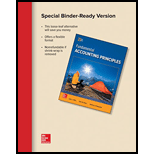
Introduction:
Ratio Analysis
• Ratio analysis is a study of several key metrics of a company based on the data presented in its’ financial statements with an objective to evaluate the financial health of a company.
• It is essential for investors, stakeholders, government bodies etc. to evaluate the key metrics of an entity in order to ensure that the company fulfills the going concern principle and displays financial stability.
The key metrics mentioned above include the following:
• Total Asset Turnover – A measure of the correlation between the Total assets employed and the turnover of the business.
• It seeks to evaluate the volume of sales in relation to the assets employed. It gives an indication of the sales in relation to the investment made in the assets and overall capital contribution to the company in the form of Assets.
• Return on Total Assets – A measure of the total
• It seeks to measure the return earned on the total assets i.e. the resources employed by the business to directly or indirectly increase revenue or reduce costs.
• Net Profit Margin – It is a measure of the total Profit earned from sales after deduction of operating expenses, selling and distribution expenses and other indirect costs.
• It is often the most sought after financial measure to evaluate profitability since it gives a clear indication of the
To Prepare:
Report comparing Roak and Clay companies highlighting their ability to meet current obligations and use current assets efficiently
Want to see the full answer?
Check out a sample textbook solution
Chapter 17 Solutions
Loose Leaf for Fundamental Accounting Principles
- I need help finding the accurate solution to this general accounting problem with valid methods.arrow_forwardCosts added during the period arearrow_forwardDriftwood Furniture Company implemented a new quality control system. Product approval requires: material inspection (40% weighting), structural testing (30% weighting), and finish quality (30% weighting). If a product scored 76 on material inspection, 82 on structural testing, and 68 on finish quality, your task is to identify the weighted quality score. Helparrow_forward
- I need help finding the accurate solution to this general accounting problem with valid methods.arrow_forwardA company had a Work in Process balance of $93,000 on January 1, 2022. The year-end balance of Work in Process was $85,000 and the Cost of Goods Manufactured was $725,000. Use this information to determine the total manufacturing costs incurred during the fiscal year 2022.arrow_forwardPlease explain the correct approach for solving this general accounting question.arrow_forward
- I am looking for the correct answer to this general accounting problem using valid accounting standards.arrow_forwardProvide correct solution for financial accounting questionarrow_forwardI am searching for the accurate solution to this general accounting problem with the right approach.arrow_forward

 AccountingAccountingISBN:9781337272094Author:WARREN, Carl S., Reeve, James M., Duchac, Jonathan E.Publisher:Cengage Learning,
AccountingAccountingISBN:9781337272094Author:WARREN, Carl S., Reeve, James M., Duchac, Jonathan E.Publisher:Cengage Learning, Accounting Information SystemsAccountingISBN:9781337619202Author:Hall, James A.Publisher:Cengage Learning,
Accounting Information SystemsAccountingISBN:9781337619202Author:Hall, James A.Publisher:Cengage Learning, Horngren's Cost Accounting: A Managerial Emphasis...AccountingISBN:9780134475585Author:Srikant M. Datar, Madhav V. RajanPublisher:PEARSON
Horngren's Cost Accounting: A Managerial Emphasis...AccountingISBN:9780134475585Author:Srikant M. Datar, Madhav V. RajanPublisher:PEARSON Intermediate AccountingAccountingISBN:9781259722660Author:J. David Spiceland, Mark W. Nelson, Wayne M ThomasPublisher:McGraw-Hill Education
Intermediate AccountingAccountingISBN:9781259722660Author:J. David Spiceland, Mark W. Nelson, Wayne M ThomasPublisher:McGraw-Hill Education Financial and Managerial AccountingAccountingISBN:9781259726705Author:John J Wild, Ken W. Shaw, Barbara Chiappetta Fundamental Accounting PrinciplesPublisher:McGraw-Hill Education
Financial and Managerial AccountingAccountingISBN:9781259726705Author:John J Wild, Ken W. Shaw, Barbara Chiappetta Fundamental Accounting PrinciplesPublisher:McGraw-Hill Education





